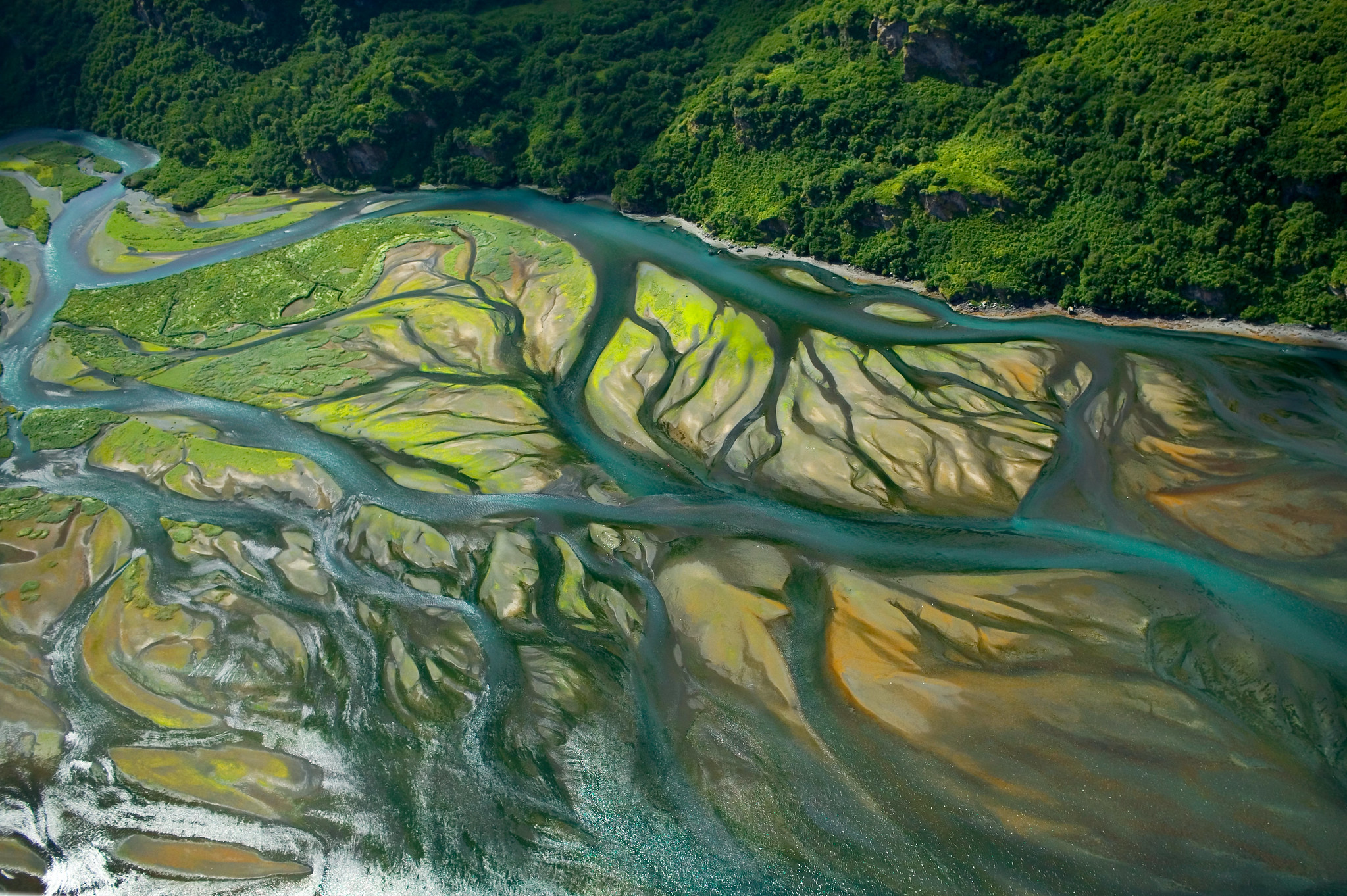Water
 If the continental United States represented the entire surface of the earth, water would cover as much as every state west of the Mississippi River, with enough left over to cover the state of New York. Of the total volume of water on earth, about 97% is saltwater, and only about 3% is fresh. 98% of the freshwater is locked away in groundwater, ice caps, and glaciers, meaning only 2% of the world’s freshwater is available for human use. That’s about 148 gallons per person on Earth. In comparison, a 10-minute shower can take between 20 and 50 gallons of water.
If the continental United States represented the entire surface of the earth, water would cover as much as every state west of the Mississippi River, with enough left over to cover the state of New York. Of the total volume of water on earth, about 97% is saltwater, and only about 3% is fresh. 98% of the freshwater is locked away in groundwater, ice caps, and glaciers, meaning only 2% of the world’s freshwater is available for human use. That’s about 148 gallons per person on Earth. In comparison, a 10-minute shower can take between 20 and 50 gallons of water.
The Earth typically does not gain or lose water in substantial amounts, so the water you use likely existed, in some form, before the first living creature evolved. While the amount of water on the planet does not change significantly, the amount of water in parts of Earth’s system can fluctuate wildly. In addition, water is not distributed evenly across the land surface. The result is that some areas are climatically wetter or drier than others, which shapes local agriculture and restricts which crops and livestock can prosper in a given region.
In the United States, some areas are expected to become drier as the climate, including average temperature and average precipitation, changes. Conversely, other areas are predicted to become wetter. The frequency of extreme weather events--severe floods, persistent drought, and severe storms--is also expected to change in some regions. The effect of climate change on water availability and wet and dry seasons has numerous potential implications for agriculture, especially in areas where the climate is expected to become less suitable to sustained agricultural production.
-
Climate Conversations with Oklahoma Conservation District Staff
Oklahoma has seen an increased incidence of extreme climate-related events in the first 20 years of the 21st Century as…
-
Rainwater Harvesting and Soil Testing Workshop
On September 29, 2023, the Santa Ana Pueblo Department of Natural Resources, Drought Learning Network, National Drought…
-
Northwest Bivalve Shellfish and Marine Snails in a Changing Climate
These animals are important for food, income, culture, and ecosystems in the Northwest and are threatened by climate…
-
Partnerships for Healthier Farms and Fish on the Henry’s Fork of the Snake River
The Upper Snake River Collaborative works with farmers and irrigators to conserve water and preserve fish habitat.
-
Great Lakes Coastal Ecosystems Adaptation Menu
Strategies for Adapting Great Lakes Coastal Ecosystems to Climate Change presents a menu of adaptation actions to help…
-
Non-Forested Wetlands Adaptation Menu
Climate adaptation resources specific to non-forested wetland conservation and management in the Midwest.
…
-
Inland Glacial Lakes Fisheries Adaptation Menu
A regional perspective to guide management of heterogeneous and yet interdependent fishery resources in glacial lakes…
-
Adaptation Menus of Strategies and Approaches
Adaptation menus provide a curated list of adaptation strategies, approaches, and tactics to integrate the effects of…
-
The Adaptation Workbook
The Adaptation Workbook helps natural resource professionals consider the potential effects of climate change on forest…










